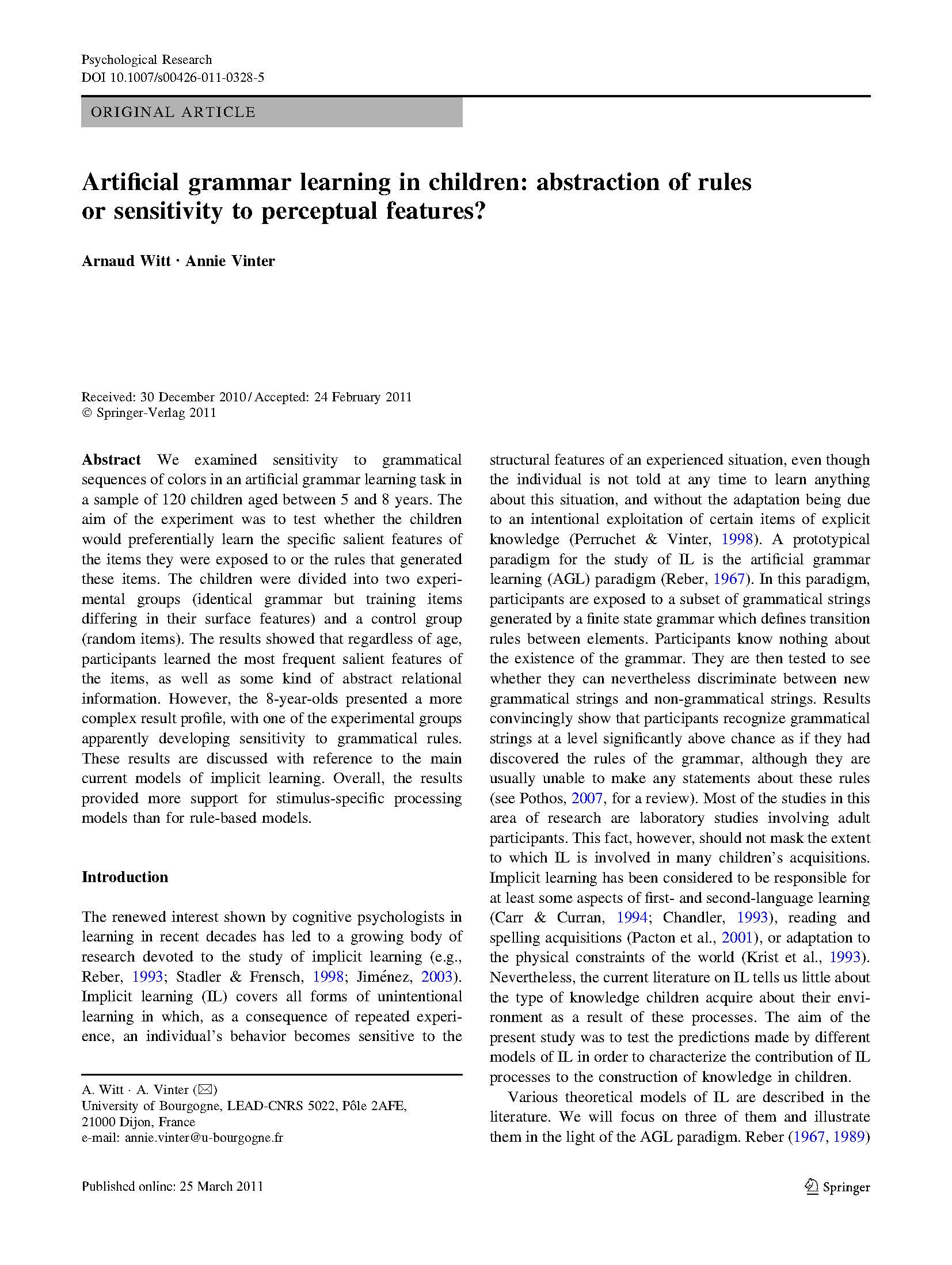We examined sensitivity to grammatical sequences of colors in an artificial grammar learning task in a sample of 120 children aged between 5 and 8 years. The aim of the experiment was to test whether the children would preferentially learn the specific salient features of the items they were exposed to or the rules that generated these items. The children were divided into two experimental groups (identical grammar but training items differing in their surface features) and a control group (random items). The results showed that regardless of age, participants learned the most frequent salient features of the items, as well as some kind of abstract relational information. However, the 8-year-olds presented a more complex result profile, with one of the experimental groups apparently developing sensitivity to grammatical rules. These results are discussed with reference to the main current models of implicit learning. Overall, the results provided more support for stimulus-specific processing models than for rule-based models.
Artificial grammar learning in children: Abstraction of rules or sensitivity to perceptual features?
